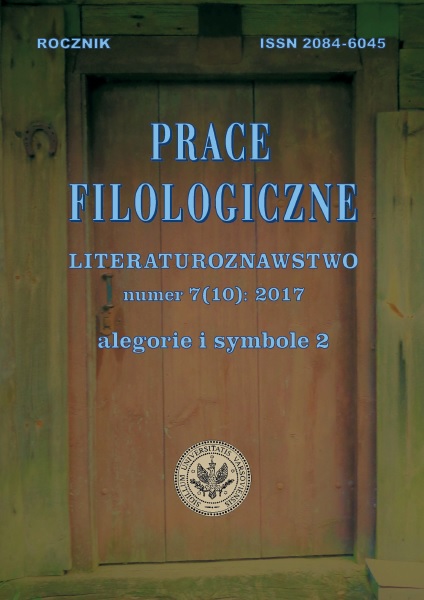Alegoria w {Historii powszechnej) Teofilakta Simokatty. Przyczynek do badań nad obecnością alegorii w literaturze bizantyńskiej
Allegory in {The History} by Theophylact Simocatta. Grounds for studies on the presence of allegory within the narrative of Byzantine literature
Author(s): Anna KotłowskaSubject(s): Studies of Literature
Published by: Wydział Polonistyki Uniwersytetu Warszawskiego
Keywords: Teofilakt Simokatta; Focjusz; historiografia bizantyńska; alegoria; Słowianie; Theophylact Simocatta; Photius; Byzantine historiography; allegory; Slavs
Summary/Abstract: {The History} by Theophylact Simocatta constitutes a very important source for the history of Byzantine civilization in the last two decades of the sixth century, especially within the context of the appearance of the Avars and Slavs in the Balkans. Its importance as a source is also to be valued in the aspect of the Persian conflict on the eastern border. Photius, the Patriarch of Constantinople (cod. 65, ed. Henry) was very strict in his opinion of the allegories present in Simocatta’s prose. The purpose of this paper is to verify the appropriateness of such harsh review by analyzing the presence of allegory in historical narrative in question.The analysis of all allegorical images present in Theophylact’s work has confirmed that the opinion presented by the author of {Bibliotheca} was indeed proper. Allegories in question prove to be highly conventional, lacking creativity, indistinctive and quite standard for the time. Only the image of Odysseus wandering, which served as allegory of writing, deserves to be called authentic and emotional. Not only are they of middling artistic value, but also they do not provide any help in interpreting the historical events they describe. Moreover, there is one fragment, where the allegory used can be even misleading and cause some misunderstandings of the text. Nevertheless, other rhetorical structures present in Theophylact’s {History} deserve to be praised, such as the method in which he uses the quotes from the epic. Such quotes are always very smoothly and diligently composed into narrative and designed to strengthen the author’s axiological argumentation, which seems to be a universal standard in Byzantine literature. „Historia powszechna” Teofilakta Simokatty [ang. The „History” of Theophylact Simocatta] to bardzo ważne źródło do dziejów Cesarstwa Bizantyńskiego w ostatnim dwudziestoleciu VI w., zwłaszcza w kontekście pojawienia się Słowian i Awarów na Bałkanach oraz konfliktu z Persją na granicy wschodniej. Powyższy artykuł zajmuje się obecnością alegorii w narracji historycznej, starając się zweryfikować bardzo pod tym względem surową opinię patriarchy Focjusza [ang. Photius] (cod. 65, ed. Henry). Analiza wszystkich, zamieszczonych w dziele Teofilakta obrazów alegorycznych, potwierdziła ocenę autora „Biblioteki”. Okazały się one wysoce konwencjonalne, pozbawione twórczej inwencji, niczym nie wyróżniając się w ramach ówczesnej normy (raz tylko, gdy za alegorię pisania posłużyła wędrówka Odyseusza, można było za tym obrazem wyczuć pewną autentyczność i emocje). Istotne jest także, że nie przynoszą one żadnej wartości merytorycznej do interpretacji opisywanych wydarzeń historycznych, a w jednym przypadku sprzyjają wręcz błędnemu ich rozumieniu. Natomiast z innych struktur retorycznych, obecnych u Teofilakta, na pochwałę zasługuje sposób wykorzystania cytatów z eposu: płynnie i w należyty sposób wkomponowanych w narrację. Ich główną funkcją jest aksjologiczne wzmacnianie argumentacji autora, co zresztą niczym nie odbiega od standardów literatury bizantyńskiej.
Journal: Prace Filologiczne. Literaturoznawstwo [PFLIT]
- Issue Year: 2017
- Issue No: 7 (10)
- Page Range: 191-203
- Page Count: 13
- Language: Polish

